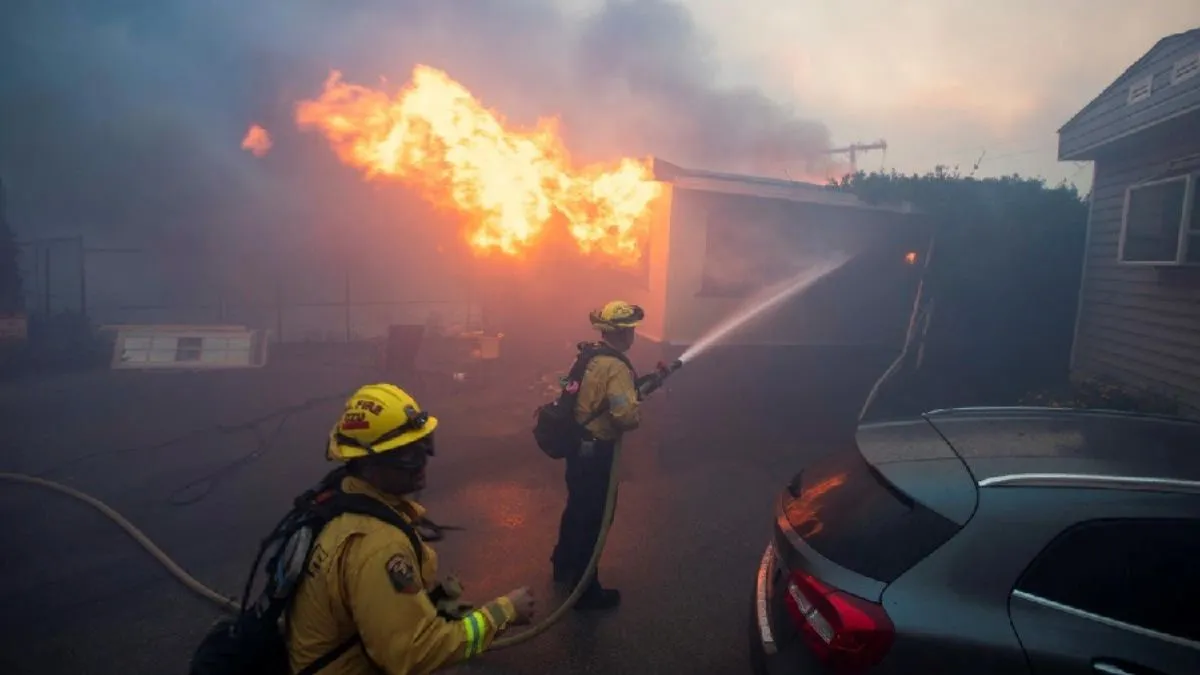The Impact Of A Weakening Ocean Current System On US Sea Level Rise

Table of Contents
The Role of Ocean Currents in Regulating Sea Level
Ocean currents act as a massive global conveyor belt, distributing heat around the planet. This thermohaline circulation, driven by differences in water temperature and salinity, significantly impacts regional climates and sea levels. The Atlantic Meridional Overturning Circulation (AMOC), a crucial component of this system, plays a vital role in regulating sea levels along the US East Coast. The Gulf Stream, a powerful warm-water current within the AMOC, transports warm water northward, influencing temperatures and sea levels along the eastern seaboard.
- Warm Water Transport: Warm water currents like the Gulf Stream transport vast amounts of heat from the tropics towards higher latitudes. This heat transfer influences regional temperatures and contributes to sea level rise through thermal expansion (water expands as it warms).
- Density and Circulation: Changes in water salinity and temperature affect its density. Denser water sinks, driving the deep ocean circulation that underpins the AMOC. Any disruption to this delicate balance can weaken the current.
- AMOC's Climate Moderation: The AMOC plays a significant role in moderating the climate of North America, particularly the eastern seaboard. A weakening AMOC could lead to dramatic shifts in regional weather patterns and sea levels.
Evidence of a Weakening AMOC and its Projected Impacts
Scientific evidence increasingly supports the hypothesis of a weakening AMOC. Declining ocean temperatures in certain key areas, shifts in salinity, and observed reductions in current speed all point towards a slowdown. This is largely attributed to climate change and the melting of Greenland's ice sheet, which introduces vast amounts of freshwater into the North Atlantic, disrupting the density-driven circulation.
- Studies and Findings: Numerous studies, published in reputable journals like Nature and Science, have presented compelling evidence of AMOC weakening, using oceanographic data gathered over decades. These studies utilize satellite data, ocean buoy measurements, and sophisticated climate models.
- Data Illustrating Decline: Data show a measurable decrease in AMOC strength over the past century, with some models projecting a further significant decline in the coming decades. This decline isn't uniform across the entire system; some regions show more pronounced changes than others.
- Implications of Further Weakening: A further weakening of the AMOC could have cascading effects, including altered weather patterns, increased storm intensity, and, critically, accelerated sea level rise along the US East Coast.
Regional Impacts on US Sea Level Rise due to Weakening Ocean Currents
The consequences of a weakened AMOC are not uniform along the US coastline. The East Coast is particularly vulnerable due to its proximity to the Gulf Stream and its already existing issues with sea level rise. A slowdown in the AMOC could amplify existing challenges and exacerbate future risks.
- Vulnerable Coastal Cities: Cities like Miami, Boston, and New York City face significant risks of increased coastal erosion, more frequent and severe flooding, and greater vulnerability to storm surges. Low-lying areas and coastal communities are especially vulnerable.
- Increased Flooding and Erosion: A weaker AMOC could lead to a faster rate of sea level rise along the East Coast, increasing the frequency and severity of coastal flooding and erosion. This poses significant threats to infrastructure, property, and human lives.
- Economic and Social Consequences: The economic and social consequences of accelerated sea level rise are far-reaching. The damage to coastal infrastructure, disruption to tourism, displacement of populations, and increased insurance costs will place a heavy burden on affected communities and the national economy.
Mitigation and Adaptation Strategies for a Weakening Ocean Current System
Addressing the threat posed by a weakening AMOC and its contribution to US sea level rise requires a two-pronged approach: mitigation and adaptation.
- Mitigation (Reducing Greenhouse Gas Emissions): The most critical step is to drastically reduce greenhouse gas emissions to slow the pace of climate change and minimize further weakening of the AMOC. This requires global cooperation, transitioning to renewable energy sources, and implementing sustainable practices.
- Adaptation (Coastal Protection and Relocation): Adaptation strategies are crucial to protect coastal communities from the unavoidable impacts of sea level rise. These include building stronger seawalls, restoring coastal wetlands (which act as natural buffers), and, in some cases, strategically relocating vulnerable communities.
- Community Preparedness and Resilience: Investing in early warning systems, improving coastal infrastructure, and educating communities about the risks of sea level rise are essential for building resilience.
Conclusion: Understanding and Addressing the Impact of a Weakening Ocean Current System on US Sea Level Rise
The weakening of the AMOC presents a significant and largely underappreciated factor contributing to US sea level rise. The evidence points towards a clear link between a slowing AMOC and accelerated sea level rise along the US East Coast, posing a serious threat to coastal communities and economies. Addressing this challenge requires urgent action on both mitigation and adaptation fronts. We must drastically reduce greenhouse gas emissions to slow the pace of climate change and strengthen our coastal defenses to protect against the inevitable impacts of rising sea levels. Learn more about this crucial issue and support initiatives dedicated to combating climate change and protecting our coasts from the effects of a weakening ocean current system and its impact on US sea level rise. [Link to relevant resource/organization]

Featured Posts
-
 Us Army Embraces Right To Repair A New Era For Military Equipment Maintenance
May 18, 2025
Us Army Embraces Right To Repair A New Era For Military Equipment Maintenance
May 18, 2025 -
 Betting On Natural Disasters A Look At The Los Angeles Wildfire Situation
May 18, 2025
Betting On Natural Disasters A Look At The Los Angeles Wildfire Situation
May 18, 2025 -
 Fortnite I Os Exploring The Reasons For Its Removal From The App Store
May 18, 2025
Fortnite I Os Exploring The Reasons For Its Removal From The App Store
May 18, 2025 -
 Teylor Svift Pobila Rekord Prodazh Vinila 10 Let Uspekha
May 18, 2025
Teylor Svift Pobila Rekord Prodazh Vinila 10 Let Uspekha
May 18, 2025 -
 See Taylor Swifts Eras Tour Costumes High Resolution Photos And Outfit Details
May 18, 2025
See Taylor Swifts Eras Tour Costumes High Resolution Photos And Outfit Details
May 18, 2025
Latest Posts
-
 Snl Controversy Bowen Yang Addresses Ego Nwodims Viral Weekend Update
May 18, 2025
Snl Controversy Bowen Yang Addresses Ego Nwodims Viral Weekend Update
May 18, 2025 -
 Bowen Yang Speaks Out Ego Nwodims Snl Sketch And The Fallout
May 18, 2025
Bowen Yang Speaks Out Ego Nwodims Snl Sketch And The Fallout
May 18, 2025 -
 Snl Host Reactions Ego Nwodims Unexpected Weekend Update
May 18, 2025
Snl Host Reactions Ego Nwodims Unexpected Weekend Update
May 18, 2025 -
 Ego Nwodims Weekend Update Snls Most Uncomfortable Moment
May 18, 2025
Ego Nwodims Weekend Update Snls Most Uncomfortable Moment
May 18, 2025 -
 Bowen Yang Defends Ego Nwodims Viral Snl Weekend Update Bit
May 18, 2025
Bowen Yang Defends Ego Nwodims Viral Snl Weekend Update Bit
May 18, 2025
